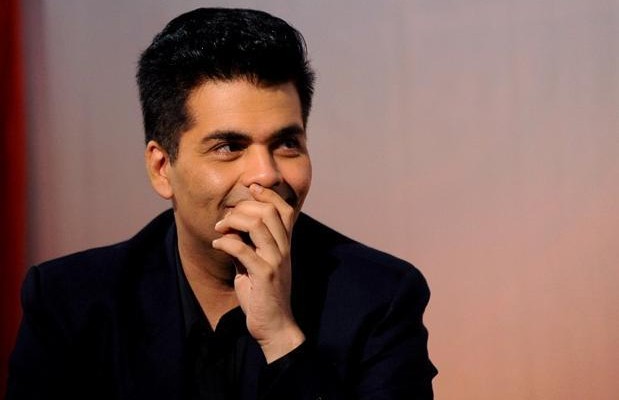Sanjay Leela Bhansali, Kabir Khan and Karan Johar score highest among Bollywood directors on the nepotism index
Ever since film actor Kangana Ranaut drew attention to nepotism in Bollywood earlier this year, the issue has continued to attract attention. Hardly any interview with a Bollywood celebrity is complete these days without that customary question on nepotism.
In an attempt to quantify the extent of nepotism in the industry, and to measure how nepotism varies across production houses, Mint has developed a Nepotism Index, based on the share of insiders (those with Bollywood family connections) cast as leads. As the chart below shows, nepotism is prevalent across production houses, with Nadiadwala Grandson Entertainment Ltd leading the charts. The production houses of Ajay Devgn and Shah Rukh Khan (Red Chillies Entertainment Ltd) follow close behind.
The analysis of production houses is based on data for 10 large film production houses in the country, which cumulatively accounted for an overwhelming majority of super-hit films over the past five years. Data from Bollywoodhungama.com was used to arrive at the top 10 revenue-grosser in each year from 2012 to 2016. Once the top production houses were identified, data on leads for the past five years was sourced from the official websites of the production houses.
UTV scores low on the Nepotism Index partly because it co-produces many movies with independent producers and directors. Yash Raj Films Pvt. Ltd has a low score thanks to its subsidiary, Y-films, which has produced films such as Mere Dad in Maruti and Mujhse Fraaandship Karoge targeted at a younger audience. T-Series Pvt. Ltd appears to be the least nepotistic among the top producers.
The Nepotism Index only serves as a rough gauge of the power of connections in Bollywood. Even though some Bollywood dynasts may have been initially selected for a film role because of their connections, some of them may have flourished in the industry because they have delivered hits, and are seen as bankable stars by producers. Also, stars such as Shah Rukh Khan are technically ‘outsiders’, and have been considered as such in this analysis. But today they wield as much clout as any Bollywood insider.
Given that directors have as much say, if not more, in the casting of leads, it also makes sense to look at the Nepotism Index for leading film directors of Bollywood. The directors considered for the analysis include both big-budget film directors who work for the top production houses, as well as directors such as Anurag Kashyap and Vishal Bharadwaj who lead smaller production houses of their own, and have won critical acclaim for some of their films in recent years.
The analysis shows that Sanjay Leela Bhansali, known for making big-budget films, scores highest on the Nepotism Index. He is followed closely by Kabir Khan (of Ek Tha Tiger and Bajrangi Bhaijaan fame) and Karan Johar, whom Ranaut had criticized for promoting nepotism when she was interviewed by Johar on his talk show Koffee with Karan.
Directors of big-budget films seem to prefer working with insiders or established stars. Their low risk appetite in experimenting with new actors perhaps stems partly from the higher financial stakes involved. In contrast, directors such as Bharadwaj and Kashyap, who typically produce and direct relatively small-budget films, seem to be more comfortable in casting outsiders as their leads.
Kashyap, who has launched actors without Bollywood family connections such as Nawazuddin Siddiqui and Richa Chadda, has among the lowest scores on the Nepotism Index. Only Imtiaz Ali and Farah Khan have scores equal to or lower than him.
There is also a gender aspect to this issue. Male lead actors, who typically play the central, pivotal characters, are more likely to be insiders. With the exception of Shah Rukh Khan and Akshay Kumar, most of the other male leads—Aamir Khan, Salman Khan, Ranbir Kapoor, Ajay Devgn, Saif Ali Khan, for instance—come from families with connections to Bollywood. In contrast, the secondary nature of their roles in Bollywood films makes it relatively easier for female outsiders.
The median share of insiders cast as male leads by the top production houses over the past five years is as high as 40%. For female leads, the median share is relatively lower at 27%.
One important caveat to note is that all industry connections are not exactly equal even though they have been treated as such in the analysis for the sake of simplicity. Both Shreyas Talpade and Kareena Kapoor have been considered as insiders in this analysis. However, Talpade’s level of access, which comes from his two aunts who are actors, cannot be compared to Kapoor’s privilege. Ranveer Singh may appear to be an outsider, but he happens to be Sonam Kapoor’s cousin. Many consider Deepika Padukone, with her familiarity with industry figures, to be as much of an insider as someone from a Bollywood family. Both Padukone and Amitabh Bachchan, son of a renowned Hindi poet, have been considered as outsiders in the analysis, though they are privileged.
That said the broad trends seem to suggest that producers and directors of big-budget films are more likely to be nepotistic. Relying on Bollywood dynasties does not seem to have hurt their top lines, at least so far.


Leave a Reply